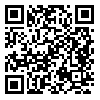جستجو در:
مقالات پذیرفته شده در نوبت انتشار
برگشت به فهرست مقالات |
برگشت به فهرست نسخه ها
دانشگاه علامه محدث نوری ، shabanikarim@gmail.com
چکیده: (2880 مشاهده)
The present case study had as its aim to uncover the diagnostic and instructional potential of dynamic assessment (DA) in the context of L2 writing during asynchronous computer-mediated communication (ACMC). More precisely, the study investigated the role of ACMC-based DA through e-mail in diagnosing and promoting low-proficiency L2 learners’ writing abilities in an Iranian EFL context. To this end, a case study design was adopted and three low-proficiency students of English as a Foreign Language (EFL) were selected to participate for a time span of ten weeks. The error analysis of learners’ performances in the pretest and posttest sessions led to the detection of a number of writing problems including the content, structural organization, grammatical accuracy, lexical appropriateness, and mechanics. A posterior examination of computer-mediated offline interactions led to the detection of a number of mediational strategies namely ask to revise, identify a problem area, specify the problem area, clarify the error kind, offer a choice and provide an explicit explanation as well as reciprocity patterns including unresponsive, growing autonomy and full autonomy which together helped diagnose the students' writing problems and trace their developmental trajectories. On implication side, it is argued that the ACMC-based DA serves as a strong diagnostic tool that makes a genuine understanding of L2 learners' writing abilities.
نوع مقاله: مقالات علمی پژوهشی |
موضوع مقاله:
آموزش زبان
ارسال پیام به نویسنده مسئول
| بازنشر اطلاعات | |
 |
این مقاله تحت شرایط Creative Commons Attribution-NonCommercial 4.0 International License قابل بازنشر است. |






